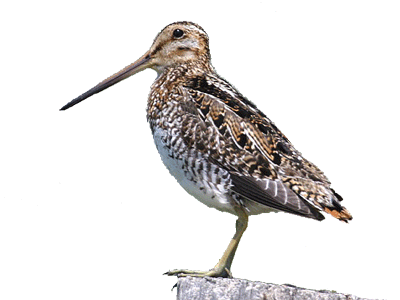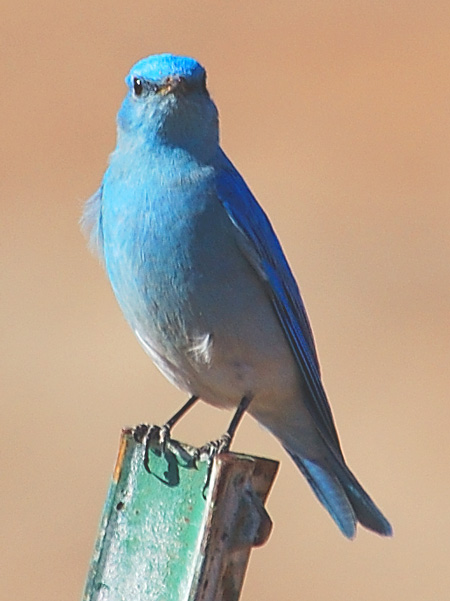Utah County Birders Newsletter
|
 |
Contents
February Meeting
Upcoming Field Trips
Note from Ned
Utah’s New
Checklist
Provo 2008 CBC
Bird of the Month
January Hotline Highlights
FEBRUARY MEETING:
Thursday, February 12th.
Ned Hill
will report, with pictures, on his recent birding trip to
Ecuador.
Meet at 7:00 PM in the Bean Museum Auditorium on the BYU Campus.
February 21. 2009
We'll go to Farmington Bay Waterfowl Management Area
to look for Bald Eagles. This date misses
DWR's eagle day, so hopefully it will be less congested than last year. We'll
leave from the East Bay Sam's Club at 8:00 am.
We are actively recruiting people to lead local half-day field
trips, any time, any place. If you would like to lead a field trip or if you
have any ideas for this year’s field trips, please contact Lu Giddings at -
seldom74@xmission.com.
February 13 – 16, 2009
12th Annual Great Backyard Bird Count
- For more information, go to
www.birdcount.org
Notes from Ned
By Ned Hill, UCB President
I’m excited to be once again actively involved with
Utah County Birders. My professional responsibilities in the past few years have
made active participation difficult. I missed the opportunity to attend the
evening meetings, go on the field trips and participate in the other activities
of UCB. It left a void in my life. I now look forward to making up for lost
time.
We have some great people working with us at UCB. I very much appreciate all our
volunteer staff members who give of their time and talents to make the
organization work. These are generous people! I hope that together we will be
able to expand our UCB activity, draw in new members and build on the excellent
leadership we have enjoyed in the past.
I see the role of UCB as helping birders to enhance their enjoyment of the
birding experience. Birding can, of course, be a solo activity. However, like
you, I have found that birding is much more fun, meaningful, educational, and
enjoyable when shared with others. We can learn from each other and from invited
experts. We can enjoy field experiences together. And perhaps we can plan an
adventure or two for those who want to search for birds in far away places.
I also see our role as giving others the opportunity to enjoy birding. I suspect
there are hundreds, even thousands, of people in Utah County who would enjoy the
birding experience if they only knew about it. Nearly 20 years ago in the early
spring I asked a fellow faculty member if he’d like to go to lunch with me—and
if he didn’t mind stopping by a marsh on the way. He seemed mildly interested.
We picked up a sandwich and then drove to the marshy area near what is now the
Mountain Spring exit to I-15—unfortunately it’s now a trailer park.. As we ate
our sandwich, we shared my binoculars and saw Great Blue Heron, Snowy Egret,
Double-crested Cormorant, American White Pelicans, Yellowlegs, Sandpipers,
Avocets, Stilts, Phalaropes, etc. He was amazed. He had not seen any of these
birds before and had no idea they were just a few miles from Provo. He later
told me that was the most expensive lunch he’s ever had—counting, of course, all
of the optical equipment and birding trips he’s invested in since that day. I
hope we can all give our friends and family members the opportunity to
experience the discovery Professor Ivan Call made at that lunch.
This is your organization. I promise to listen carefully to your suggestions—and
even your complaints. I look forward to some wonderful birding times with all of
you.
Utah's New
Checklist
By Milt Moody
 |
|
Photo by Jack Binch |
The Utah Bird Records Committee has published a new state checklist. Seventeen
new species have been added to the last official checklist that came out in 2004
bringing the total to 443 species for the state of Utah. According to the new
codes, fifteen species are more abundant and nineteen species have become less
common. A new designation of “provisional species” has been added to indicate
birds that were placed on the checklist from sight records alone.
Starting from the most recent, the new species added since 2004 are:
Whip-poor-will (with a nice audio recording), Baird's Sparrow, Purple Finch and
Pine Warbler all three found at Lytle Ranch, a Sharp-tailed Sandpiper at
Antelope Island Causeway, a Cape May Warbler at the Red Hill Golf Course in St.
George, the Painted Bunting found at Fish Springs by Matt Mills, a Neotropic
Cormorant at Quichapa Lake in Iron County, the Western Gull at Lee Kay Ponds, a
surprising Gray Hawk at Gunlock Reservoir, the Pacific Golden-Plover that Keith
Evans found at Antelope Island Causeway, Glossy Ibis first seen at Benson in
Cache County then else where in northern Utah, a Ruby-throated Hummingbird in
Larry Tripp's yard in the small town of Central, Cackling Goose which has been
split from Canada Goose as a new species, the Rufous-backed Robin which came as
a Christmas present in 2004 at Springdale, the White Ibis a lot of us were able
to see north of Spanish Fork, and finally the first one that was added was a
Blue-headed Vireo which was another “golf-course bird” in St. George. (With
several sight records of first state birds pending with the Records Committee,
there could be more additions coming in the near future).
Of the fifteen birds that are listed as more common, the Eurasian Collared-Dove
has be far shown the most dramatic increase, followed by the Great Egret and
then maybe the Broad-winged Hawk which may not have increased at all but we’ve
learned how to see it better. The rest of the birds in this group has shown only
minor increases in abundance.
Of the nineteen birds that are listed as less common, the Yellow-billed Cuckoo
and the Northern Mockingbird are the ones that show the most significant change,
the rest are pretty minor.
Check out the new Utah state checklist and a write-up “about the checklist” on
our web site (utahbirds.org) to see the “specifics” of our newly updated state
bird list.
Below is the partial results and highlights for
the 2008 Provo CBC.
Total Species: 94
Participants: 43 paying observers
Number of parties: 17
Total Hours: 137.25
Total car miles: 546
I have added the to the totals from the compiling the
results of three feeder watchers.
We counted 16 species of waterfowl; highest numbers of ducks were Mallards
(1418) followed by Pintails (455)and
American Wigeon (194). No rare species of waterfowl were observed.
We counted eleven species of raptors with Kestrel the highest (71) followed by
Red-tails (58). One Northern Goshawk, two Prairie Falcons and four Merlins were
also observed.
Three species of owls were found: Barn Owls (2), W. Screech (6) and Gt.Horned
(2).
Six species of finch were totaled with Gray-crowned (175) and Black Rosy (8)
being the most unusual. Other "good" birds observed included Sandhill Crane
(108), Ruffed Grouse (1), Mourning Dove (302, quite high for this time of the
year), Bushtit (12), Bewick's Wren (1), Clark's Nutcracker (1), and Savannah
Sparrow (1).
Thanks to all who participated on a very cold day. I don't believe the
temperature ever went above freezing. This completes my 37th and final year of
being the compiler. I have appreciated all of you who have consistently gone out
and covered your area(s). Now its time to turn it over to a younger and more
energetic organizer.
Thank you.
Merrill Webb
 |
|
Mountain Bluebird - photo by Lu Giddings |
Bird of the Month
Mountain Bluebird
Scialia currucoides
Order: Passeriformes Family: Turdidae
By Junece Markham
Mountain Bluebirds are characterized by an overall blue wash. They lack the bold
rufous coloring of Western Bluebirds. Males are a striking sky-blue color.
Females are predominantly gray with a bluish tint, especially on the wings and
tail. Females have a white eye-ring, which males lack, and some females may have
some light rufous on their throats and breasts.
It’s that flash of brilliant sky blue that catches my eye, whether it is a Jay,
a Bunting, a Kingfisher, a Bluethroat or a Bluebird. This week it was Mountain
Bluebirds. When Matt Miles posted Mt. Bluebirds at Warm Springs Wildlife
Management area, I had to go there. Each year they are a personal goal for me to
see.
At Warm Springs Matt reported a group of 15 Mt. Bluebirds. When I went over a
couple of days later I only saw 6-8 birds. To see only one Mt. Bluebird means
it’s a wonderful day. Like the song, Zip-a dee-doo-dah, zip-a dee-ay. My, oh,
my, what a wonderful day. Mister Bluebird on my shoulder, It’s the truth, it’s
actch’ll (I wish). Everything is satisfactch’ll. Zip-a-dee-doo-dah,zip-a-dee-ay,
Wonderful feeling, wonderful day!
I remember the first time I saw a flock of Mt. Bluebirds. It was near Ken’s Lake
in Moab, Ut. Birds were flying across the road, flashes of blue caught my eye.
STOP! They’re Mt. Bluebirds. I’ve seen the same phenomenon near Gunlock
Reservoir, flashing Bluebirds flying across the road and then feeding on the
ground. And again in Cedar City on the road to Kolob Reservoir. The flocks
consisted of 50-100 birds. The internet says Mt. Bluebirds are the most
migratory of the bluebirds, leaving their nesting grounds in September or
October for their wintering grounds in the southwestern US & Mexico, returning
to their nesting grounds in March. They migrate short distances, sometimes
forming large flocks in the winter at low elevations.
In their behavior I’ve seen Mt Bluebirds hover low over the grass in open
fields, and drop to the ground to pounce on prey. They also catch food in
mid-air by darting out from a perch. Their diet consists of a combination of
insects and berries. Insects make up a larger percentage of their diet than is
the case with other thrushes.
I don’t remember ever seeing a Mt Bluebird nesting. No, I take that back. I have
seen them around bluebird nest boxes attached to fence posts. They are
cavity-nesters. They rely on natural holes in trees, old woodpecker holes, and
man-made cavities such as the bluebird boxes. On the way home from visiting
Deseret Ranch, (you often see Mt. Bluebirds at the ranch) the road from Woodruff
to Evanston, has a mile or two of bluebird nest boxes. I have almost always seen
nesting Mt. Bluebirds along that road. Bluebird nest boxes are GREAT! Both male
& female build a loose cup-shaped nest with stem, grass, and twigs, lined with
softer material. The female lays and incubates 5-6 eggs. Both parents feed the
young, which fledge in 3 weeks of hatching . The parents continue to tend the
young for another 3-4 weeks after which they lay a second brood and start over
again. What a busy life. They should be appreciated.